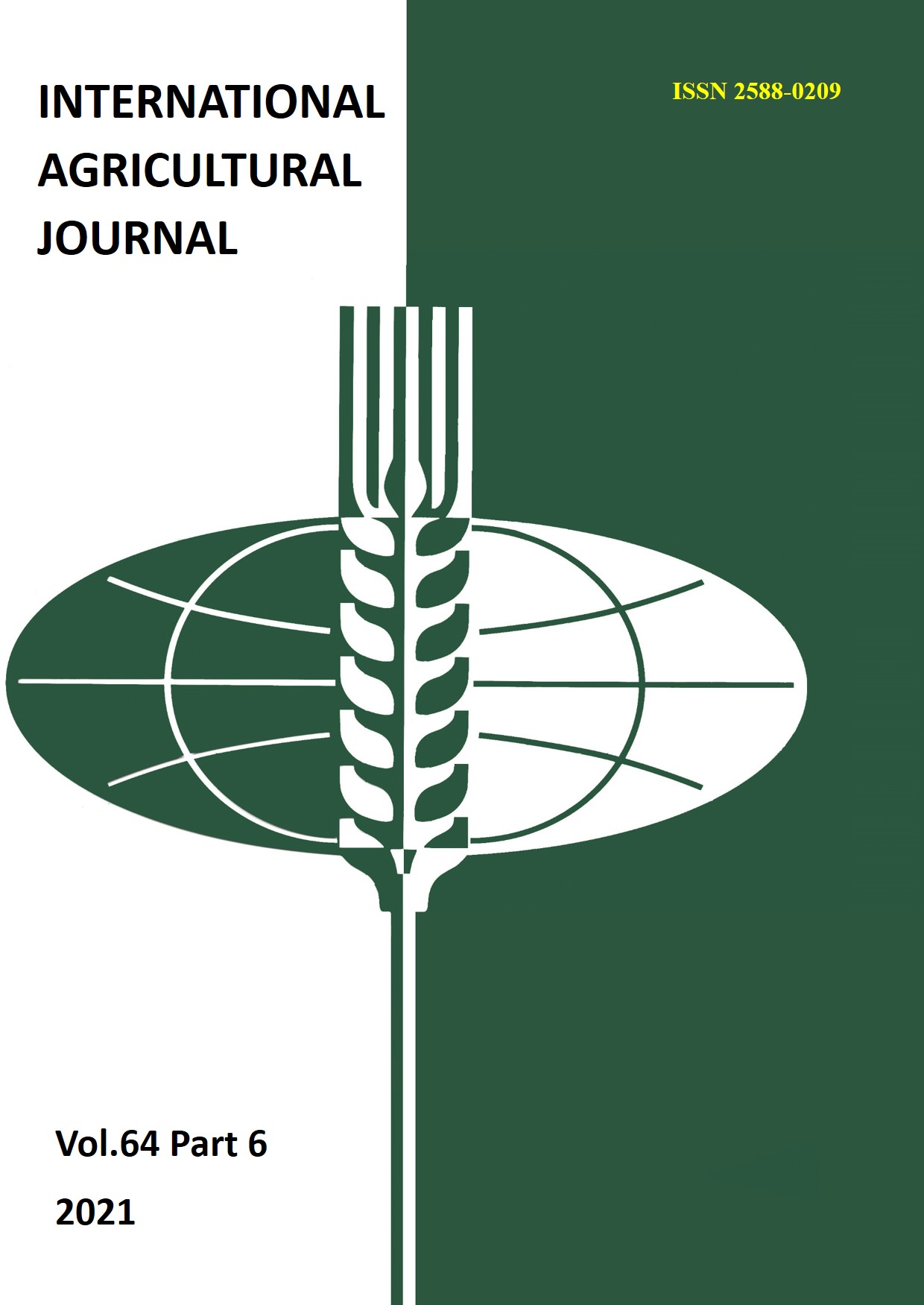ORGANIZATIONAL FORMS OF COOPERATION OF SMALL AGRICULTURAL PRODUCERS: DIRECTIONS OF HYBRIDIZATION
Main Article Content
Abstract
The article discusses the signs of hybridization of agricultural consumer cooperatives, whose members are households of the population and farms. The aim of the study is to assess the trend of hybridization of agricultural consumer cooperatives and identify indicators that favor the development of traditional or hybrid cooperatives. Hybridization refers to the development of organizational forms of cooperatives that do not correspond to the classical cooperative models and the legislation on agricultural consumer cooperatives in force in our country. The study was conducted on the basis of a sample of existing agricultural consumer cooperatives of the Penza region. The classification of organizational forms of cooperative relations of farms and households of the population is proposed. Two main criteria are identified that characterize the affiliation of the organizational model used by the cooperative to hybrid forms of cooperation: the criterion of the type of activity of the cooperative and the criterion of the structure of the shareholders of the cooperative. It was revealed that the predominant share of cooperatives in the studied population is characterized by signs of hybridization. The most common form of hybridization is the organization of production cooperative relations within the framework of a consumer cooperative. Cooperatives organized on the basis of assets and business connections of large agricultural organizations are less common. The basis of the membership base of cooperatives are households of the population, the share of farms in the structure of shareholders of consumer cooperatives is significantly less. Indicators are proposed to assess the conditions conducive to the development of traditional or hybrid forms of cooperation. As an essential factor, the degree of difference between potential members of the cooperative in the scope of activities and the level of material and technical security is highlighted. The conclusion is made about the need for state support of all organizational forms of cooperation of small agricultural producers.
Article Details
References
2. Munch D. M., Schmit T. M., Severson R. M. Assessing the value of cooperative membership: A case of dairy marketing in the United States. Journal of Co-operative Organization and Management 9, 1 (2021). https://doi.org/10.1016/j.jcom.2021.100129.
3. Sultana M., Ahmed J. U., Shiratake Y. Sustainable conditions of agriculture cooperative with a case study of dairy cooperative of Sirajgonj District in Bangladesh. Journal of Co-operative Organization and Management 8, 1 (2020). https://doi.org/10.1016/j.jcom.2019.100105.
4. Hannachi M., Fares M., Coleno F., Assens C. The “new agricultural collectivism”: How cooperatives horizontal coordination drive multi-stakeholders self-organization. Journal of Co-operative Organization and Management 8, 2 (2020). https://doi.org/10.1016/j.jcom.2020.100111.
5. Morozov A.V., Yavkina G.I., Boiko O.V. Sel'skokhozyaistvennye potrebitel'skie kooperativy i «dekorativY» // Fundamental'nye i prikladnye issledovaniya kooperativnogo sektora ehkonomiki. 2020. № 2. S. 109-121.
6. Fernando S., Garnevska E., Ramilan T., Shadbolt N. Organisational attributes of cooperatives and farmer companies. Journal of Co-operative Organization and Management 9, 1 (2021). https://doi.org/10.1016/j.jcom.2021.100132.
7. Kotlyarov I. D. Kooperativy i novaya institutsional'naya ehkonomicheskaya teoriya // Zhurnal institutsional'nykh issledovanii. 2019. T. 11. № 3. S. 84-103. DOI 10.17835/2076-6297.2019.11.3.084-103.
8. Burlakov V. B. Faktory organizatsionnykh preobrazovanii v deyatel'nosti sovremennykh sel'skokhozyaistvennykh kooperativov // Ostrovskie chteniya. 2021. № 1. S. 193-197.
9. Nagovitsina L. P. Ob"edinitel'nye transformatsii - neobkhodimyi vektor razvitiya kooperativov // Fundamental'nye i prikladnye issledovaniya kooperativnogo sektora ehkonomiki. 2020. № 1. S. 53-63.
10. Golovina S. G. Vozmozhnosti ispol'zovaniya novykh modelei kooperativov v agrarnoi ehkonomike Rossii // Vestnik Tyumenskogo gosudarstvennogo universiteta. Sotsial'no-ehkonomicheskie i pravovye issledovaniya. 2020. T. 6. № 1. S. 322-344. DOI 10.21684/2411-7897-2020-6-1-322-344.
11. Iliopoulos C., Värnik R., Filippi M., Võlli L., Laaneväli-Vinokurov K. Organizational design in Estonian agricultural cooperatives. Journal of Co-operative Organization and Management 7, 2 (2019). https://doi.org/10.1016/j.jcom.2019.100093.
12. Forney J., Häberli I. Co-operative values beyond hybridity: The case of farmers’ organisations in the Swiss dairy sector. Journal of Rural Studies 53, (2017), P. 236-246. https://doi.org/10.1016/j.jrurstud.2017.04.003.
13. Gataulina E. A., Antonova M.P., Potapova A.A. Izmenenie podkhodov k podderzhke potrebitel'skoi kooperatsii: ot organizatsionnoi formy k protsessu kooperatsii // Izvestiya Timiryazevskoi sel'skokhozyaistvennoi akademii. 2020. № 5. S. 95-110. DOI 10.26897/0021-342X-2020-5-95-110.
14. Niyazmetov D., Soliev I., Theesfeld I. Ordered to volunteer? Institutional compatibility assessment of establishing agricultural cooperatives in Uzbekistan. Land Use Policy 108, (2021). https://doi.org/10.1016/j.landusepol.2021.105538

